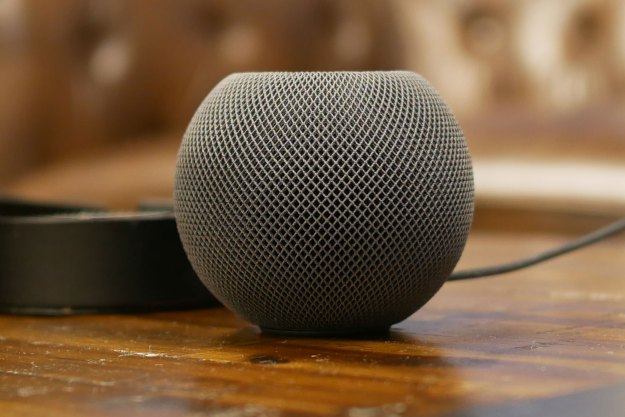There’s no shortage of sensors for keeping tabs on your home, and Elgato’s latest is the Eve Degree.
While it may sound like a hygiene product meant to keep you smelling fresh, the Degree is actually a temperature and humidity sensor. With an LCD screen and black and silver body, it looks a bit like a high-tech pager and is about the size of a pack of cards cut in half. You can read the temperature right on the display and a button on the back lets you change it to show the humidity level. In the app, you can see graphs of your home’s temperature, humidity, and air pressure changes. Elgato suggests you stick it on a wall, but it doesn’t come with a mounting kit.
With its small footprint and emphasis on design, the Degree is meant for places you want to show off but that also need to be monitored, like a greenhouse or wine cellar. It runs on a replaceable lithium button cell battery and connects to Apple devices (iOS only) via Bluetooth low energy. That means it’s wireless and works with HomeKit, but you’ll need an Apple TV to get it to work with Scenes, such as for turning on a connected fan if it gets too hot.
When we tried it out, the Degree immediately said the room was 80 degrees Fahrenheit. (It can also give the reading in Celsius.) Considering it was about 60 degrees outside, this didn’t seem right, and the temperature adjusted to around 74 degrees over the next few hours, much closer to the readout we got from another thermometer. It seems to take the Degree some time to catch up when there’s a temperature shift.
Elgato also makes a bigger sensor, the Eve Room, which can also monitor temperature and humidity, as well as volatile organic compound levels. The Room is made of white plastic and takes three AA batteries. While it can’t act as an air quality monitor, the Degree is a step in the right direction design-wise, and it’s one of the more attractive sensors we’ve seen.
The $70 device will be available for purchase June 6.
Editors' Recommendations
- Matter adds support for fridges, air purifiers, robot vacuums, and more with massive 1.2 update
- New Yale Assure Lock 2 models get fingerprint scanner, support for Apple Home keys
- What is Apple HomeKit?
- Are smart lights bulbs worth it?
- The future of Matter in 2023


